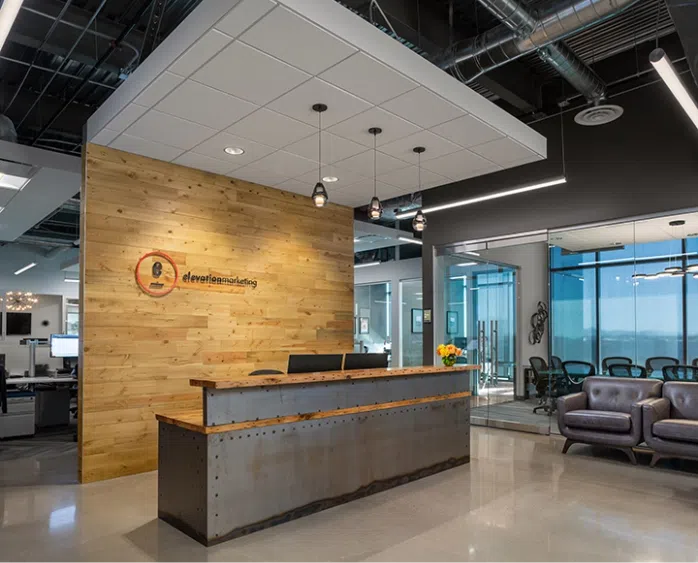In B2B marketing, creativity goes far beyond clever visuals and eye-catching design. It’s about being strategic, accountable and results-driven. The days of leading with a gut feeling, a passing trend or personal preference are long gone.
As president of a full-service B2B marketing agency, I work with a wide range of clients, and one thing is consistently clear: today’s C-suite leaders are better informed and more invested in marketing decisions than ever before. They’re asking tougher questions, demanding deeper insights and challenging their marketing teams to answer one critical question: “Why?”
Modern B2B marketers must connect the dots between marketing spend and measurable impact. They’re expected to prove ROI. Sales teams want to know that campaigns meet demand. CFOs want to know that every advertising dollar is working hard.
That’s where defensible creative comes in.
Defensible creative represents the intersection of insight and imagination. It’s creative work that’s built on a foundation of marketing strategy and validated by data. It aligns with brand values, speaks directly to the needs of target audiences and has been pressure-tested to ensure it performs. It’s not just a pretty campaign; it’s a business case with stopping power.
In this article, we’ll unpack what defensible creative means, why it’s essential for modern B2B marketing and how marketers can use it to drive better results and stronger internal buy-in.
Defining Defensible Creative
So, what exactly is B2B defensible creative?
Put simply, defensible creative is work that can be clearly explained and confidently supported, whether in a boardroom or in front of your sales team. It’s the kind of creative that doesn’t just look good but has a clear, well-reasoned rationale behind it. It’s a campaign, concept or execution crafted with intent, informed by research, aligned with business objectives and optimized based on how real people respond to it.
Defensible B2B creative doesn’t happen by accident. It’s the result of marrying creativity to strategic discipline—grounded in data, aligned with business goals and built to perform. Whether the objective is generating B2B leads, increasing engagement or shifting brand perception, this kind of work respects the brand’s voice while staying flexible enough to adapt across platforms and audiences. And perhaps most importantly, it’s ready to answer the inevitable question: “Why did we go with this?”
When creative is defensible, marketers don’t have to rely on subjective choices or internal politics. They can point to the logic, research and testing that informed the work. That confidence transforms how marketing is perceived inside the organization, from a cost center to a growth driver.
Defensible Creative Drives Decisions and Results
B2B marketers face a uniquely challenging environment. Buying cycles are long. Decision-makers are many. Products are often complex, high-value and highly regulated. Unlike B2C, where a person might make a low-risk purchase based on emotion or brand affinity, B2B buying decisions are rarely impulsive. They’re deliberate, analytical and layered with internal scrutiny.
In that context, B2B marketing can’t rely on flash alone. Creative work must be smart, credible and strategic, especially when justifying spend to a finance-driven executive team. The more sophisticated the buyer and the more consequential the decision, the more critical it becomes to have a creative approach that’s rooted in data and aligned with business needs.
Defensible creative enables marketing teams to move forward boldly and with clarity. It allows for creative risk-taking, but within an ecosystem that manages risk and maximizes reward. When every part of the campaign—from concept to copy to media placement—is backed by evidence and strategy, it’s easier to make a compelling case to leadership, gain stakeholder support and drive meaningful business outcomes.
How Defensible Creative Works
Creating defensible creative isn’t a linear process. It’s iterative, strategic and collaborative. But there is a framework that helps ensure ideas are both imaginative and accountable. Let’s walk through how defensible creative takes shape, from the first spark of insight to the final campaign report.
Every major creative undertaking—such as a new B2B brand initiative, messaging and positioning, product launch, creative-driven advertising or marketing activation—should begin with some form of multidimensional research. This could include customer interviews, first-party data, behavioral analytics, competitive audits and industry trend reports. The goal is to uncover who you’re speaking to, what challenges they face, where they are in the buying journey and what messaging has or hasn’t worked before. These insights inform the strategy before a single word is written or a design is mocked up, ensuring the creative direction is inspired and intentional.
With research in place, a creative strategy takes shape. Whether the objective is driving awareness, repositioning a B2B brand or supporting sales enablement, the strategic goal becomes the creative anchor. It’s documented in detailed briefs that align all stakeholders and set clear parameters for success. Every idea must tie back to this foundation, ensuring creativity isn’t just expressive but purposeful and measurable.
Then comes the creative process, where art and science converge. B2B writers, designers and strategists explore concepts within defined boundaries shaped by brand voice, audience expectations and media context. These guardrails aren’t constraints; they’re essential guidelines that keep the work focused and effective.
Defensible creative may feel intuitive, but it stands apart because it’s backed by data, not just instinct. That’s what turns bold ideas into business results.
No matter how strong the internal alignment, no B2B creative should go to market without some level of audience testing. This step is where defensibility becomes real.
Testing might involve A/B experiments in digital ads, qualitative message testing with a small group of buyers or pilot campaigns in limited markets. Whatever the method, the goal is the same: gather performance data that can confirm or challenge our assumptions.
Testing not only helps reduce the risk of underperformance but it also gives marketers a tangible story to tell. Instead of launching a campaign and hoping for the best, teams can say, “We ran three versions of this concept, and this one outperformed the others by 27%. That’s why we chose it.”
This kind of validation is gold in boardrooms. It shifts conversations from subjective preference to performance-backed decisions.
Once a creative direction is selected, marketing execution becomes the next proving ground. Defensible creative doesn’t just live in pitch decks; it must work in real-world conditions. This involves maintaining consistency across B2B channels, ensuring proper brand application and meeting legal and regulatory standards.
Every asset, from a landing page to a trade show banner, must carry the same strategic and creative thread. This is where operational discipline matters. A great idea can be undermined by a sloppy rollout. Conversely, tight execution strengthens credibility and builds momentum.
Creative that is consistent and properly executed reinforces the strategy behind it, protecting the brand, building credibility at every touchpoint and strengthening results over time.
The final phase of defensible creative is arguably the most important: optimization. Creative work should never be “set it and forget it.” Even the best ideas can be improved. By monitoring performance data—click-through rates, conversion rates, engagement metrics and lead quality—B2B marketers can make informed decisions about where to tweak and refine.
This ongoing analysis enhances results and reinforces the credibility of the creative team. It shows that marketing isn’t just launching ideas, it’s managing them like assets, with continual investment and refinement. Over time, this mindset creates a culture of learning and iteration. Every campaign becomes smarter than the one before it.
Winning Over the C-Suite
One of the most powerful outcomes of defensible creative is the ability to communicate effectively with senior leadership.
When B2B marketers present creative ideas backed by audience data, strategic alignment and performance testing, they’re no longer making an “ask,” they’re making a case. It’s easier to gain budget approvals, win stakeholder confidence and keep marketing at the strategic table.
For CFOs and COOs in particular, defensible creative addresses the classic tension between creativity and accountability. It reframes marketing spend as an investment in growth, not an expense line on a spreadsheet. It connects the dots between brand storytelling and business results, between big ideas and bottom lines.
In a fast-changing B2B marketing landscape, where budgets are tight, sales journeys are long and expectations are high, defensible creative is the only way B2B marketers can safely move through the next five years without becoming replaceable.
If you’re looking for a marketing partner that delivers real impact, partner with Elevation Marketing. With more than 25 years of experience in B2B marketing across 22 industries, we don’t just understand B2B—we live it. Our team drives measurable results through data-driven, defensible creative strategies.
[Connect With Us]About the Author
Scott Miraglia – President
Scott is a balanced risk-taker with nearly three decades of experience starting and growing advertising and marketing agencies. His business acumen is matched by a drive to build creative teams that thrive in open, collaborative work environments. Scott seeks out the best creative individuals, not only to provide quality service to clients but also to help shape the future direction of Elevation Marketing

